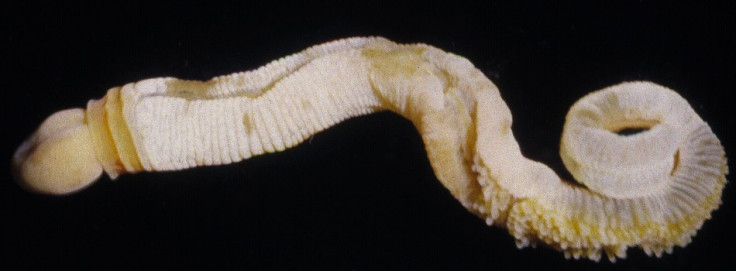500 Million-Year-Old Penis-Shaped Missing Link Found in Canada

The discovery of a 500-million-year-old penis-shaped fossil has provided a missing link that pushes back evolution of enteropneusts by 200 million years.
Enteropneusts - or acorn worms - are marine animals closely related to starfish and sea urchins. They are seldom seen but thrive in fine sands and mud.
Researchers from the University of Montreal discovered the fossils in Canada's Burgess Shale fossil beds in Yoho National Park. The beds are 505 million years old.
The fossils, Spartobranchus tenuis, are a member of the acorn worm group. "Unlike animals with hard parts including teeth, scales and bones, these worms were soft-bodied, so their fossil record is extremely rare," said study author Chris Cameron.
"Our description of Spartobranchus tenuis, a creature previously unknown to science, pushes the fossil record of the enteropneusts back 200 million years to the Cambrian period, fundamentally changing our understanding of biodiversity from this period."
Hemichordates are a type of marine animal split into two groups: the acorn worm, which live in burrows, and the pterobranchs, which live in a tubular structure anchored to the ocean floor.
Since their discovery in the 19<sup>th century, scientists have been trying to determine the relationship between the two branches of hemichordata.
"One of the big punchlines from my graduate work was molecular evidence that enteropneusts and pterobranchs are closely related," Cameron said.
"It's astonishing how similar Spartobranchus tenuis fossils are to modern-day acorn worms, except that they also formed fibrous tubes."

He said these tubes are the missing link connecting the two main hemichordata groups, which also included the now-extinct graptolites.
Researchers say these tubes were lost in the lineage that resulted in modern-day acorn worms, but were retained through graptolites and pterobranchs.
The Spartobranchus tenuis fossils had flexible bodies consisting of a head, a collar and a narrow elongated trunk that terminated in a bulbous structure - which researchers think may have served as an anchor. The largest complete specimens were 10cm long.
Many worms were preserved within the tubes, suggesting the tubes were used as a dwelling structure. They probably fed on small particles of matter filtered from seawater.
Researchers said hemichorates also share many characteristics with chordates - which are a group of animals that humans belong to.
Cameron said: "Work from my lab has shown that enteropneusts filter feed using a pharynx perforated with gill slits, just like the invertebrate chordates.
"There are thousands of specimens at the Walcott Quarry in Yoho National Park, so it's possible Spartobranchus tenuis may have played an important role in moving carbon from the water column to the sediment in the early Burgess Shale environment."
© Copyright IBTimes 2024. All rights reserved.







